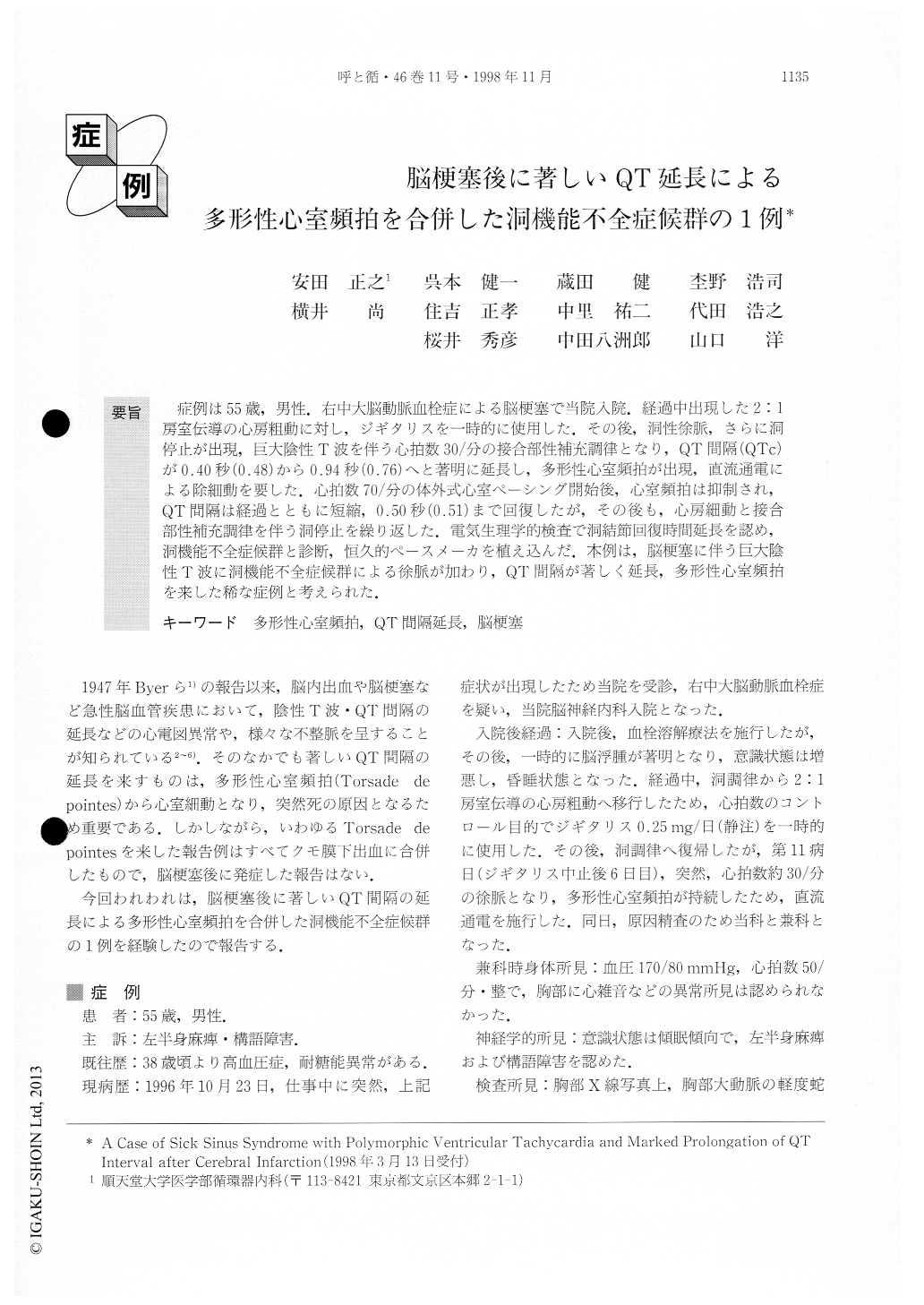Japanese
English
- 有料閲覧
- Abstract 文献概要
- 1ページ目 Look Inside
症例は55歳,男性.右中大脳動脈血栓症による脳梗塞で当院入院.経過中出現した2:1房室伝導の心房粗動に対し,ジギタリスを一時的に使用した.その後,洞性徐脈,さらに洞停止が出現,巨大陰性T波を伴う心拍数30/分の接合部性補充調律となり,QT間隔(QTc)が0.40秒(0.48)から0.94秒(0.76)へと著明に延長し,多形性心室頻拍が出現,直流通電による除細動を要した.心拍数70/分の体外式心室ペーシング開始後,心室頻拍は抑制され,QT間隔は経過とともに短縮,0.50秒(0.51)まで回復したが,その後も,心房細動と接合部性補充調律を伴う洞停止を繰り返した.電気生理学的検査で洞結節回復時間延長を認め,洞機能不全症候群と診断,恒久的ペースメーカを植え込んだ.本例は,脳梗塞に伴う巨大陰性T波に洞機能不全症候群による徐脈が加わり,QT間隔が著しく延長,多形性心室頻拍を来した稀な症例と考えられた.
A 55-year-old man was admitted to our hospital because of cerebral infarction due to occlusion of the right middle cerebral artery. During the course of his hospitalization, the patient developed atrial flutter (AF) with 2 : 1 atrioventricular conduction, which was treat-ed by intravenous digoxin. Although sinus rhythm was restored after the treatment, sinus arrest with a jun-ctional escape rhythm of 30 beats/min was noted. Marked prolongation of the QT interval (0.94 sec) and giant negative T waves in V4-6 following polymorphic ventricular tachycardia (VT) were also recognized. VT was successfully converted to sinus rhythm by a car-dioversion of 200 joule. The QT interval gradually recovered to 0.50 sec during temporary ventricular pacing (70 beats/min), and VT was suppressed. How-ever, the patient sufferred from repetitive paroxysmal AF and sinus arrest and electrophysiological study in-dicated prolonged sinus node recovery time, he was implanted with a cardiac pacemaker under the diagno-sis of sick sinus syndrome. In this case, prolongation ofthe QT interval due to cerebral infarction, which was promoted by bradycardia, might have been the cause of the induced polymorphic VT.

Copyright © 1998, Igaku-Shoin Ltd. All rights reserved.


